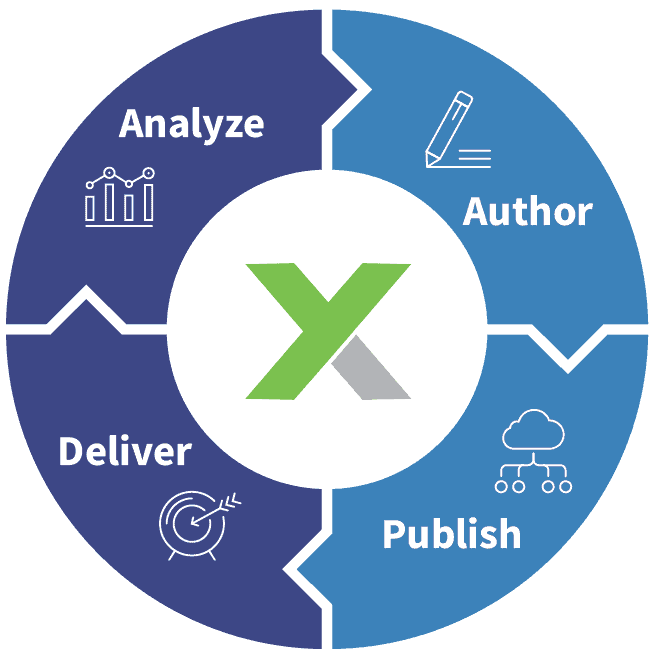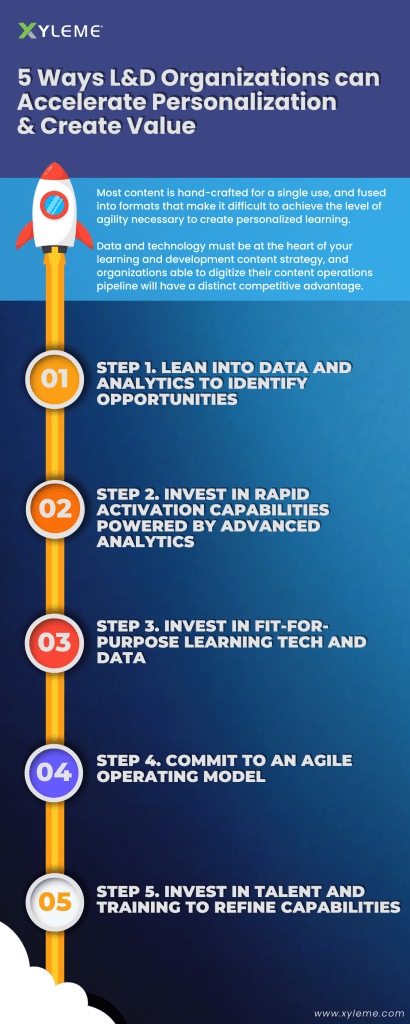In today's rapidly evolving world of L&D, learners are presented with a myriad of platforms and tools to enhance their learning experience. However, navigating through these different systems can often feel disjointed, leading to a fragmented learning journey. This is where the concept of orchestration comes in – creating a seamless and directed experience as learners move across various platforms, such as Learning Management Systems (LMS), Learning Experience Platforms (LXP), Adaptive Learning tools, and Knowledge Management systems.
Orchestration goes beyond simply integrating these different platforms; it entails breaking down the silos that exist between them, ultimately providing learners with a cohesive and interconnected experience. When learners can seamlessly transition from one platform to another, without losing their progress or feeling overwhelmed by the complexities of multiple systems, a truly integrated learning environment is achieved.
Embracing an Omnichannel Approach
Learning and development teams must embrace a more omnichannel approach, and more tightly orchestrate the experience as learners move between platforms.
There are many tools to pick from, and the first step is to select the right tool for the job. While the idea of a single platform (or one-stop-shop) is falling away, simplifying the learner’s experience is still vital.
Learning Content Management System: Ensuring Consistency
A key element of success in an omnichannel L&D approach is to ensure that the learning content is consistent between platforms. This requires the addition of a Learning Content Management System (LCMS) to provide a central content repository.
The LCMS feeds content to all the delivery systems while keeping all your content in sync. Xyleme LCMS helps organizations to feed content when and where it is needed by allowing L&D teams to:
- Unify content management
- Provide a centralized content repository
- Easily keep content in sync across new platforms
- Centralize learning activity data
- Break down content silos

Because Xyleme aggregates all your proprietary content into a single repository, it can:
- Keep content in sync across all versions and distribution platforms – Xyleme provides a single repository for your content because the content is linked, not copied, you only need to update it in one place.
- Make your content more adaptable – Content is just the content until it is published in a specific format. This powerful shift gives your content a lot of flexibility to drive more engaging fit-for-purpose learning experiences.
- Manage versions – Our links and sharing mechanisms don’t break when you update versions! Xyleme maintains a full version history with the ability to compare and roll back to prior versions. We have a full audit trail of who updated content when it was updated, and the ability to find and view the exact version viewed by a learner.
- Manage translations – While Xyleme doesn’t translate your content. We help to manage the translations and reduce translation costs because, unlike other rapid authoring tools, we can extract and send the XML for translation reducing the costs to unpackage, repackage, and reflow content significantly reducing the project management costs.
But delivery is only one part of the story—particularly when it comes to personalization. To create robust and meaningful individualized learning journeys, content must be delivered with a high degree of specificity, to match the learner in the moment.
Most content is hand-crafted for a single use, and fused into formats that make it difficult to achieve the level of agility necessary to create personalized learning.
Data and The Learner’s Journey: The Value of Personalization
According to McKinsey & Company, personalization is a force multiplier—and business necessity—one that more than 70 percent of learners now consider a basic expectation.

Key Strategies for Successful Personalization:
- Lean into data and analytics to identify opportunities. Looking across the learner life cycle, leaders build a granular view of where there is the most value. They leverage learner segments and micro-segments, and factor in behavioral, transactional, and engagement trends. They use those insights to define and quantify their personalization objectives and ground their efforts in learner-centric key performance indicators.
- Invest in rapid activation capabilities powered by advanced analytics. Leaders develop at-scale content creation and AI-driven decision capabilities to respond to real-time learner signals. They leverage predictive analytics and models to determine what content and messages to serve which learners. They also establish robust measurement processes that track the impact of learner interventions and feed that information back to their systems and teams. These processes help them deliver the right content through the right channels at the right moments in a consumer’s journey.
- Invest in fit-for-purpose learning tech and data. Rather than letting a “thousand flowers bloom,” personalization leaders target a specific set of learner outcomes and use cases that support them. They align organizational resources around these use cases and work back from the desired outcomes to build the data and learning tech roadmap and identify the enablers and investments needed to deliver.
- Commit to an agile operating model. Businesses that succeed in scaling personalization create teams that cut across teams, using a hub-and-spoke approach. Each hub owns specific elements of the personalization journey, with each spoke empowered to build underlying use cases. Together, these teams run hundreds of tests per year, enabled by advanced data analytics and test-and-learn techniques.
- Invest in talent and training to refine capabilities. Leaders bring a similarly data-driven approach to building their teams and organizational capabilities. They focus on the skills needed to support personalization at scale (for instance, digital acumen, advanced analytics, and learning design). Then they map these capabilities against their current talent base, using the results to inform hiring, training, and upskilling. This approach allows companies to anticipate the expertise and tools they need as their personalization program advances.[1]
Drawing Inspiration from Marketing Departments
In conclusion, the marketing department's approach to multi-touch attribution offers valuable insights for L&D leaders looking to assess the impact of their efforts on the overall business goals. By tracking, segmenting, and matching buyers to the right content at the right time, marketers have effectively influenced the customer journey.
By drawing inspiration from marketing departments, L&D leaders can adapt these strategies to measure and enhance the effectiveness of their own learning and development initiatives. This cross-functional collaboration can result in a more strategic approach to L&D, ultimately driving success for the organization as a whole. So, let's take a page from the marketing playbook and leverage their innovative methods to optimize our own L&D efforts.
Our Customers Have Powerful Journeys
Explore our insightful customer stories to see how our solutions have helped organizations like yours achieve tangible results.





